KUCHING: The aggressive expansion plans of the rubber gloves’ nitrile segment could lead to average selling price weakness in the short term before demand from emerging markets catches up.

DEMAND SHIFT: While global glove demand is growing at a moderate rate of eight per cent to 10 per cent per annum, it is believed that nitrile glove demand will grow at a higher rate, taking market share away from latex gloves.
In a desperate move to retain its customer base, latex-focused original equipment manufacturers (OEMs) were frantically expanding their nitrile production, said Maybank Investment Bank Bhd analyst Lee Yen Ling in a research note yesterday.
At the Invest Malaysia 2011 Conference last week, Top Glove Corporation Bhd concurred with the analyst’s view that pricing was still the key determinant of glove sales. It also indicated its plan to have 50 per cent nitrile in its product mix, within a four to five years time frame.
In 2011, the top seven, namely Top Glove, Supermax Corporation Bhd, Kossan Rubber Industries Bhd, Hartalega Holdings Bhd, Latexx Partners Bhd, Adventa Bhd and YTY Industry Sdn Bhd, which control around 55 per cent of the world examination gloves market, were scheduled to lift their new capacity by an estimated 17 billion pieces and almost all were earmarked for nitrile production.
This represented a supply surplus of six billion pieces of gloves in 2011, on the assumption that global demand grows by eight per cent year-on-year (y-o-y) this year, said the analyst. “Nevertheless, we believe the overall supply overhang is in the latex glove segment rather than nitrile, given the robust growth of nitrile glove demand.”
While global glove demand was growing at a moderate rate of eight per cent to 10 per cent per annum, it was believed that nitrile glove demand would grow at a robust rate, taking market share away from latex gloves.
“In fact, Hartalega expects nitrile glove demand to grow strongly at 30 per cent per annum, given the pricing disparity and the switch to nitrile gloves is aggressive in the developed markets such as the US and Europe,” Lee pointed out. “Demand from emerging markets could rise exponentially when nitrile OEMs start creating awareness of nitrile gloves and penetrate the market this year.”
On the financial front, after the V-shaped recovery in March 2011, natural rubber latex (NR) price had remained at high levels. However, there was some sign of abating with prices closing lower each day since a week ago. NR price had fallen by six per cent in one week, but was still 37 per cent higher y-o-y.
“This is in line with our expectation that NR price may fall as the ‘wintering season’ of the rubber trees typically ends in May. We have assumed a 20 per cent quarter-on-quarter (q-o-q) drop in NR latex cost for the third quarter of 2011,” Lee opined.
Meanwhile, nitrile butadiene rubber (NBR) price had risen to US$1.65 per kilogramme in April 2011 due to rubber consumers’ unwarranted switch from NR to NBR. “We think the consumption pattern may revert once NR price falls in May, barring any jump in crude oil prices.”
“Nevertheless, we estimate that for the nitrile-latex glove pricing disparity to disappear, NBR price will need to increase by 50 per cent,” she added.
Based on the given factors, the research firm stated predominant nitrile glove producers like Hartalega would continuously show stronger q-o-q results while latex glove producers such as Top Glove would continue to post lackluster numbers.
In relation to that, it expected Hartalega to deliver a six per cent sequential earnings growth in the fourth quarter of financial year 2011 on higher sales volume. On the other hand, Kossan might post 10 per cent weaker sequential earnings in its first quarter results due to lower seasonal demand for latex gloves.
“We think Hartalega has the potential to trade up to Top Glove’s current valuation given the promising prospects for nitrile gloves, compared with the long-term negative outlook for latex gloves,” said Lee.
Maybank Investment pegged Hartalega target price at RM6.80 per share and Kossan at RM3.60 per share, while Top Glove was at RM5.10 per share.
(Source: http://www.theborneopost.com/?p=124979)
 New Delhi, Apr 30 (PTI) Synthetic rubber consumption has gone up by 5.4 per cent to 35,260 tonnes in January this year compared with the same month last year.
New Delhi, Apr 30 (PTI) Synthetic rubber consumption has gone up by 5.4 per cent to 35,260 tonnes in January this year compared with the same month last year. KOTTAYAM, APRIL 30:
KOTTAYAM, APRIL 30:  Lack of demand especially from China due to its high level of rubber inventory is likely to drag prices in Malaysia down next week.
Lack of demand especially from China due to its high level of rubber inventory is likely to drag prices in Malaysia down next week. KUALA LUMPUR, April 30 (Bernama) -- Lack of demand especially from China due to its high level of rubber inventory is likely to drag prices in Malaysia down next week.
KUALA LUMPUR, April 30 (Bernama) -- Lack of demand especially from China due to its high level of rubber inventory is likely to drag prices in Malaysia down next week.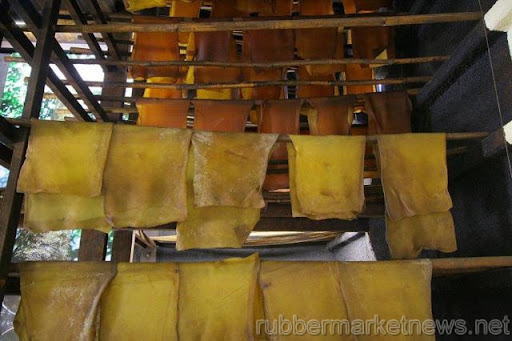 Natural rubber output will increase in the coming weeks as farmers resume harvesting after the traditional low-production season, easing a “tightness” in global supplies, according to the Association of Natural Rubber Producing Countries.
Natural rubber output will increase in the coming weeks as farmers resume harvesting after the traditional low-production season, easing a “tightness” in global supplies, according to the Association of Natural Rubber Producing Countries. 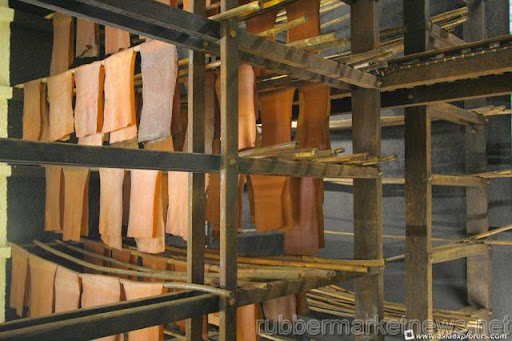 Demand for natural rubber remains strong, especially in China. This has meant the price has resisted the decline seen in some other commodities. In response, supply is expected to increase in the next three months, according to new data published by the Association of Natural Rubber Producing Countries (ANRPC) in the April issue of its publication, Natural Rubber Trends & Statistics.
Demand for natural rubber remains strong, especially in China. This has meant the price has resisted the decline seen in some other commodities. In response, supply is expected to increase in the next three months, according to new data published by the Association of Natural Rubber Producing Countries (ANRPC) in the April issue of its publication, Natural Rubber Trends & Statistics.  Tokyo (april 29, 2011) : key tokyo rubber futures logged their largest monthly loss since november 2008 in april as last month's massive japan earthquake and tsunami slashed auto output, though they rose 2.8 percent on thursday on firm oil and commodity prices and a weaker yen.
Tokyo (april 29, 2011) : key tokyo rubber futures logged their largest monthly loss since november 2008 in april as last month's massive japan earthquake and tsunami slashed auto output, though they rose 2.8 percent on thursday on firm oil and commodity prices and a weaker yen.  * Indonesia's China rubber exports seen at 800,000 T in 2011
* Indonesia's China rubber exports seen at 800,000 T in 2011 Singapore: Global natural rubber production for 2011 may come in at 10.025 million tonne, lower than an earlier forecast of 10.060 million tonne due to output revisions in member countries, the ANRPC said on Thursday.
Singapore: Global natural rubber production for 2011 may come in at 10.025 million tonne, lower than an earlier forecast of 10.060 million tonne due to output revisions in member countries, the ANRPC said on Thursday.  KOTTAYAM, APRIL 28:
KOTTAYAM, APRIL 28:  The Malaysian rubber market ended lower for the fourth consecutive day as buyers remained sidelined ahead of the Labour Day market closure on May 1.
The Malaysian rubber market ended lower for the fourth consecutive day as buyers remained sidelined ahead of the Labour Day market closure on May 1.  KOTTAYAM, APRIL 28:
KOTTAYAM, APRIL 28:  Key TOCOM rubber futures rebounded after three consecutive days of losses on Thursday (Apr 28) on higher gold and oil prices following signs that the U.S. may continue its easy monetary policy, but investors were cautious of active buying ahead of a long weekend.
Key TOCOM rubber futures rebounded after three consecutive days of losses on Thursday (Apr 28) on higher gold and oil prices following signs that the U.S. may continue its easy monetary policy, but investors were cautious of active buying ahead of a long weekend. 

 The new chairman of Rubber Board , Sheela Thomas, has assumed charge at a time when rubber prices are at a historic high. The average domestic price of rubber stood at Rs 190.03 per kg in 2010-11 compared to Rs 114.98 per kg in the previous year. However, availability of rubber in the market has remained quite low throughout the year. Trade and industry bodies have questioned the stock estimates of the Board. Apart from this, production itself has been affected by the shortage of labour and postponement of field operations like replanting of trees. But Sheela Thomas is confident that the problems that the sector is facing can be resolved soon. In an interview to ET's S Sanandakumar , the chairman said that the stress is now on new planting and replanting during the 12th Plan period. Excerpts:
The new chairman of Rubber Board , Sheela Thomas, has assumed charge at a time when rubber prices are at a historic high. The average domestic price of rubber stood at Rs 190.03 per kg in 2010-11 compared to Rs 114.98 per kg in the previous year. However, availability of rubber in the market has remained quite low throughout the year. Trade and industry bodies have questioned the stock estimates of the Board. Apart from this, production itself has been affected by the shortage of labour and postponement of field operations like replanting of trees. But Sheela Thomas is confident that the problems that the sector is facing can be resolved soon. In an interview to ET's S Sanandakumar , the chairman said that the stress is now on new planting and replanting during the 12th Plan period. Excerpts: 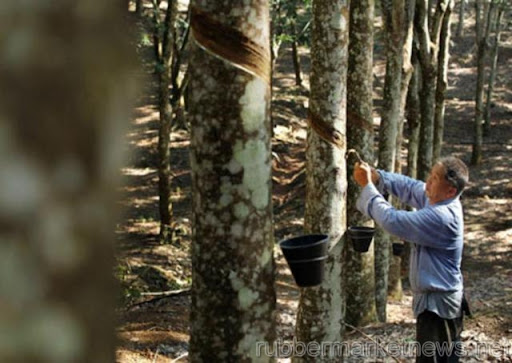 Key TOCOM rubber futures on Wednesday (Apr 27) fell 2.9 percent to a five-week low as concerns over weak demand from Japan's auto industry and a stronger yen weighed on the market.
Key TOCOM rubber futures on Wednesday (Apr 27) fell 2.9 percent to a five-week low as concerns over weak demand from Japan's auto industry and a stronger yen weighed on the market.  Honda Motor and Hyundai Motor will paint vastly different pictures for the year ahead when they report earnings on Thursday (Apr 28) after the March 11 earthquake hammered car production in Japan and helped overseas rivals in the process.
Honda Motor and Hyundai Motor will paint vastly different pictures for the year ahead when they report earnings on Thursday (Apr 28) after the March 11 earthquake hammered car production in Japan and helped overseas rivals in the process.  Tokyo (april 28, 2011) : key tocom rubber futures on wednesday fell 2.9 percent to a five-week low as concerns over weak demand from japan's auto industry and a stronger yen weighed on the market. the key tokyo commodity exchangerubber contract for october delivery settled down 11.3 yen at 378.6 yen per kg, falling for a third session in a row. the contract fell as much as 3.1 percent to 378 yen per kg before the close as weakness in shanghai rubber futures weighed on sentiment.
Tokyo (april 28, 2011) : key tocom rubber futures on wednesday fell 2.9 percent to a five-week low as concerns over weak demand from japan's auto industry and a stronger yen weighed on the market. the key tokyo commodity exchangerubber contract for october delivery settled down 11.3 yen at 378.6 yen per kg, falling for a third session in a row. the contract fell as much as 3.1 percent to 378 yen per kg before the close as weakness in shanghai rubber futures weighed on sentiment.  Key Tokyo rubber futures rose on Wednesday (Apr 27) as oil prices firmed, but the rise was capped by a stronger yen and concerns over weak demand from Japan's auto industry which has been hit by supply chain disruptions after last month's earthquake.
Key Tokyo rubber futures rose on Wednesday (Apr 27) as oil prices firmed, but the rise was capped by a stronger yen and concerns over weak demand from Japan's auto industry which has been hit by supply chain disruptions after last month's earthquake. 
 KOTTAYAM, APRIL 26:
KOTTAYAM, APRIL 26:  KOTTAYAM, APRIL 26:
KOTTAYAM, APRIL 26:  Rubber declined amid concern that a disruption in car production caused by Japan’s record earthquake will continue, curbing demand for the commodity.
Rubber declined amid concern that a disruption in car production caused by Japan’s record earthquake will continue, curbing demand for the commodity.  Shares of Indian tyre companies have gained by three to 13 per cent after German tyremaker Continental AG agreed to buy Modi Rubber’s unit last week.
Shares of Indian tyre companies have gained by three to 13 per cent after German tyremaker Continental AG agreed to buy Modi Rubber’s unit last week.  Tokyo (april 26, 2011) : key tokyo rubber futures fell 4 percent on monday on weakness in shanghai rubber futures and concern over softening demand from the japanese auto sector. the benchmark tocom rubber futures for october delivery, which debuted on monday, fell as low as 395.4 yen per kg, down 4.3 percent from its opening price, before settling at 395.9 yen, down 17.1 yen from the open.
Tokyo (april 26, 2011) : key tokyo rubber futures fell 4 percent on monday on weakness in shanghai rubber futures and concern over softening demand from the japanese auto sector. the benchmark tocom rubber futures for october delivery, which debuted on monday, fell as low as 395.4 yen per kg, down 4.3 percent from its opening price, before settling at 395.9 yen, down 17.1 yen from the open. 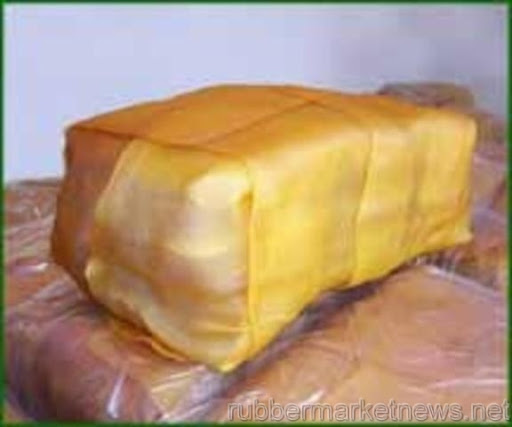 Key Tokyo rubber futures eased on Monday (Apr 25) as a stronger yen hurt sentiment, but prices stayed in narrow ranges ahead of Japan's Golden Week holidays.
Key Tokyo rubber futures eased on Monday (Apr 25) as a stronger yen hurt sentiment, but prices stayed in narrow ranges ahead of Japan's Golden Week holidays.  SINGAPORE, April 25 — Prices of tyre grade slipped today as rubber futures tumbled on fears about weakening demand from auto makers, while main consumer China turned to cheaper cargo kept in domestic warehouses, dealers said.
SINGAPORE, April 25 — Prices of tyre grade slipped today as rubber futures tumbled on fears about weakening demand from auto makers, while main consumer China turned to cheaper cargo kept in domestic warehouses, dealers said. KOCHI (Commodity Online): Indian Rubber Dealer’s Federation (IRDF) has suggested the India government to acquire land in other countries and encourage rubber cultivation.
KOCHI (Commodity Online): Indian Rubber Dealer’s Federation (IRDF) has suggested the India government to acquire land in other countries and encourage rubber cultivation.  The Office of the Rubber Replanting Aid Fund (ORRAF) is proceeding with plans to grow 128,000 hectares of para rubber after the cabinet gave the green light to the project last Wednesday (Apr 20).
The Office of the Rubber Replanting Aid Fund (ORRAF) is proceeding with plans to grow 128,000 hectares of para rubber after the cabinet gave the green light to the project last Wednesday (Apr 20).  Toyota Motor Co is set to lose its crown as the world's largest automaker after Japan's earthquake and nuclear disaster slashed local output by almost two-thirds in March.
Toyota Motor Co is set to lose its crown as the world's largest automaker after Japan's earthquake and nuclear disaster slashed local output by almost two-thirds in March.  New Delhi, Apr 24 (PTI) The domestic rubber industry has suggested the government to expand the country''s rubber output by following the Chinese model of acquiring land in other countries for plantation.
New Delhi, Apr 24 (PTI) The domestic rubber industry has suggested the government to expand the country''s rubber output by following the Chinese model of acquiring land in other countries for plantation.
 The Malaysian rubber market is likely to remain quiet next week as some players are expected to stay on the sidelines and await further drop in prices, dealers said.
The Malaysian rubber market is likely to remain quiet next week as some players are expected to stay on the sidelines and await further drop in prices, dealers said.  New Delhi, Apr 22 (PTI) Natural rubber consumption is expected to increase to 9.77 lakh tonnes in the 2011-12 fiscal, around three per cent increase from the last fiscal, as a result of growing demand from the automobile sector, Rubber Board Chairman Sheela Thomas said.
New Delhi, Apr 22 (PTI) Natural rubber consumption is expected to increase to 9.77 lakh tonnes in the 2011-12 fiscal, around three per cent increase from the last fiscal, as a result of growing demand from the automobile sector, Rubber Board Chairman Sheela Thomas said. Rubber, set for a second weekly decline, climbed on concerns that demand may outpace supply during the low-production season in
Rubber, set for a second weekly decline, climbed on concerns that demand may outpace supply during the low-production season in 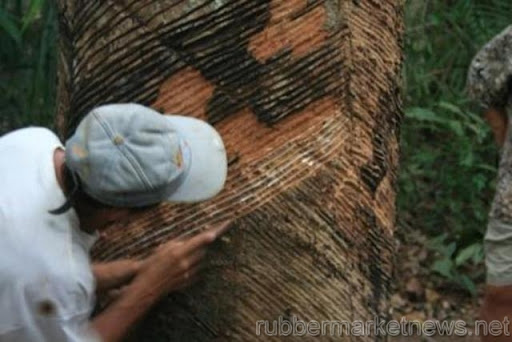 Inoue Rubber (Thailand) Plc forecasts a healthier outlook for the local motorcycle-tyre replacement market this year, in line with the growth of the motorcycle market due to the economic recovery, higher crop prices and new model launches.
Inoue Rubber (Thailand) Plc forecasts a healthier outlook for the local motorcycle-tyre replacement market this year, in line with the growth of the motorcycle market due to the economic recovery, higher crop prices and new model launches. 
 Tokyo (april 22, 2011) : key tokyo rubber futures rose 2.3 percent in early morning trade on thursday as big earnings surprises in the wall street boosted hopes for a sustained global economic recovery and pushed up oil prices. the key tokyo commodity exchange rubber contract for september delivery was up 10 yen at 435.9 yen per kg as of 0006 gmt. the most-active shanghai rubber contract for september delivery also rose 1,005 yuan to settle at 34,875 yuan ($5,340.409) per tonne on thursday.
Tokyo (april 22, 2011) : key tokyo rubber futures rose 2.3 percent in early morning trade on thursday as big earnings surprises in the wall street boosted hopes for a sustained global economic recovery and pushed up oil prices. the key tokyo commodity exchange rubber contract for september delivery was up 10 yen at 435.9 yen per kg as of 0006 gmt. the most-active shanghai rubber contract for september delivery also rose 1,005 yuan to settle at 34,875 yuan ($5,340.409) per tonne on thursday.  Rubber production in Thailand, the world’s largest grower and exporter, may decline for the first time in four years if rain persists across key plantations in the country’s south, according to the Thai Rubber Association.
Rubber production in Thailand, the world’s largest grower and exporter, may decline for the first time in four years if rain persists across key plantations in the country’s south, according to the Thai Rubber Association. KOTTAYAM, APRIL 21:
KOTTAYAM, APRIL 21: